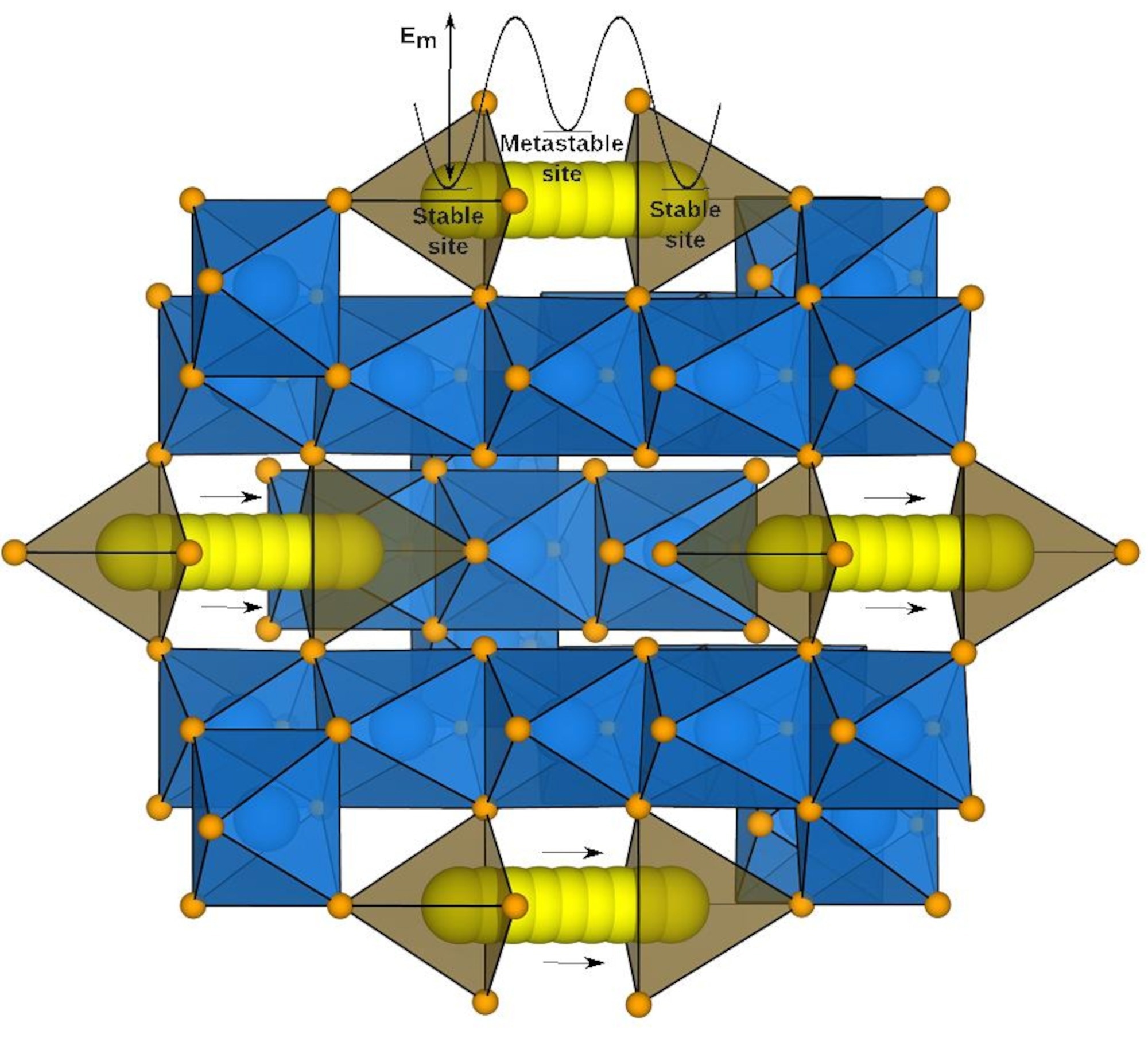Reviewed by Alex SmithJul 26 2022
The migration barrier is an important yet underrepresented component that controls battery performance. It controls how quickly ions pass through an electrode within a battery, which ultimately affects how rapidly the battery charges or discharges.
 Schematic of ionic migration in a sample intercalation host framework. Yellow spheres are the moving ions (e.g., Li, Na, Mg), while the other species constituting the structure are indicated by blue and orange spheres. The inset indicates the nominal variation of the potential energy as the ion migrates within the structure, with Em signifying the migration barrier. Image Credit: Reshma Devi
Schematic of ionic migration in a sample intercalation host framework. Yellow spheres are the moving ions (e.g., Li, Na, Mg), while the other species constituting the structure are indicated by blue and orange spheres. The inset indicates the nominal variation of the potential energy as the ion migrates within the structure, with Em signifying the migration barrier. Image Credit: Reshma Devi
Researchers frequently utilize various computer models or approximations to quickly forecast migration barrier values because it is challenging to test the migration barrier in the lab. However, only a small portion of these simulations have so far undergone experimental validation.
In a recent study, scientists from the Indian Institute of Science (IISc) and their associates thoroughly analyzed computational methods that are often employed and then compared their predictions of the migration barrier values to real data found in laboratory experiments.
In light of their findings, the team suggests a set of solid criteria to assist researchers in selecting the most precise computational framework for evaluating materials that could one day be utilized to create extremely effective batteries.
A solid negative electrode (anode), a solid positive electrode (cathode), and either a liquid or solid electrolyte that separates them make up lithium-ion batteries, which power cell phones and computers. Lithium ions move across the electrolyte when they charge or discharge, producing a potential difference.
The electrodes in lithium-ion batteries are not 100% solid. Think of them like a sponge. They have ‘pores’ through which a lithium ion has to pass.
Sai Gautam Gopalakrishnan, Study Corresponding Author and Assistant Professor, Department of Materials Engineering, Indian Institute of Science
The study was published in the npj Computational Materials journal.
The migration barrier, or the energy threshold that the ions need to overcome to traverse through the electrode, is a significant factor that affects the pace at which they enter these pores.
The lower the migration barrier, the faster you can charge or discharge the battery.
Reshma Devi, Study First Author and PhD Student, Department of Materials Engineering, Indian Institute of Science
Gopalakrishnan added, “The same migration barrier value is calculated by one group using one computational technique and another group by using another technique. The values may be equivalent, but we cannot know that for sure.”
Two approximations, called Strongly Constrained and Approximately Normed (SCAN) and Generalised Gradient Approximation (GGA), are the most commonly used methods to computationally arrive at the migration barrier, but they each have their own drawbacks.
Devi stated, “We took nine different materials. We checked which of the approximations come closest to the experimental values for each.”
The study discovered that while the GGA computations were quicker, the SCAN functional had generally superior numerical accuracy.
The researchers note that GGA was shown to have an acceptable degree of accuracy in estimating the migration barrier in some materials (such as lithium phosphate) and that it might be a preferable choice if a speedy estimate was required.
According to Gopalakrishnan, such knowledge might be helpful for researchers who want to evaluate the performance of novel materials before applying them to battery-related applications.
“Suppose you have an unknown material and if you quickly want to see whether this material is useful in your application, then you can use computations to do that, provided you know which computational approximation gives you the closest values. This is useful when it comes to materials discovery,” further stated Gopalakrishnan.
The team is also putting effort into creating machine learning techniques that will help to advance predictions of migration barriers for a variety of materials.
Journal Reference:
Devi, R., et al. (2022) Effect of exchange-correlation functionals on the estimation of migration barriers in battery materials. npj Computational Materials. doi:10.1038/s41524-022-00837-0.